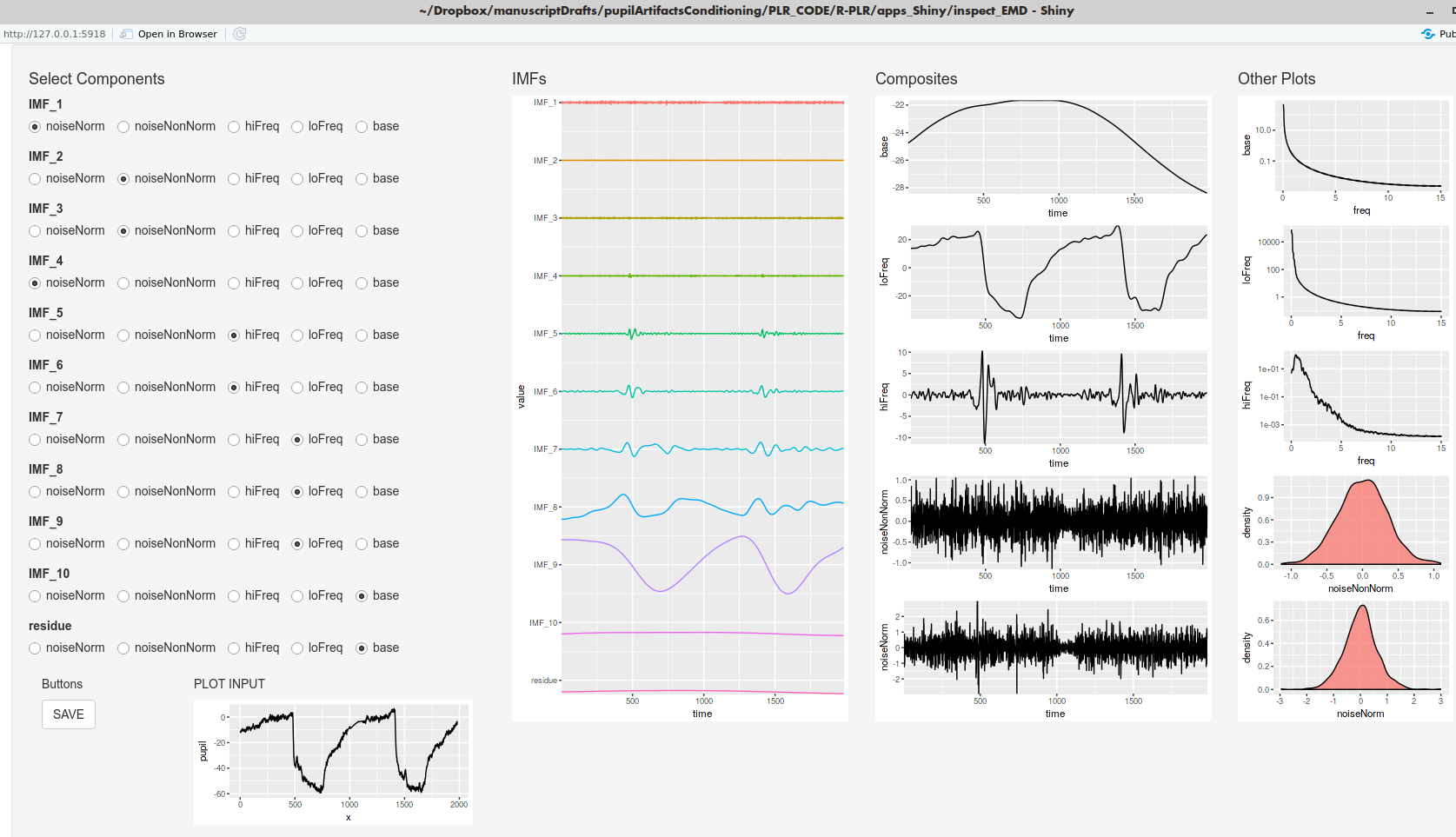[Reconstruction] EMD Inspection
Opened this issue · 1 comments
Good quality recordings
Artifact removal working
Even when the constriction amplitude is small with high noise
And with funky baseline
Nice handling of missing chunks as well
Even with an artifact spike
But then of course some traces are Problematic: Artifact spikes still left in the signal (after removing noise in IMF1-4):
Questionable Seems like a reconstriction or is it just an artifact?
After running the EMD the second time after further cleaning some of the spikes and imputing the data with missForest that seems to produce better imputations than the previously used fast StructTS Kalman filter from imputeTS, the denoising quality starts to seem really good:
Denoising performs rather well under heavy noise as well
And in some cases, one can inspect whether too much was taken from the extremities (in this case from max constriction), or was the denoising reasonable in the end:
In some cases, the small outlier "constrictions" could be constrictions, or just most likely outliers, but these were kept as they looked sort of "physiological", but could be removed later if wanted
missForest imputation with CEEMD handles better longer missing chunks than the simple Kalman filtering based
For two cases, the missForest left some outlier spikes but they were removed on second run of missForest by manually marking those spikes as NAs and keeping the imputed values from previous runs.
See the difference for file 2056
And for file 4148
And the oscillations themselves might be a bit biometric feature as well?
Some subject show stronger oscillations (hiFreq)
from blue stimulus:
Some from red stimulus
And some people seem to have more or less constant oscillations throughtout the recording
And some people have rather identical oscillations on light onsets:
And one person had very pronounced light-dependent oscillations

And as technical notes, when the decomposition is "perfect" with no residue left, the last IMF becomes a noise component as well:
And sometimes you get three "base IMFs" as typically I only have selected the residue and the last IMF to the "base"











































